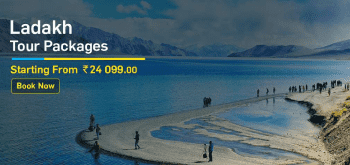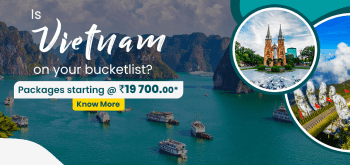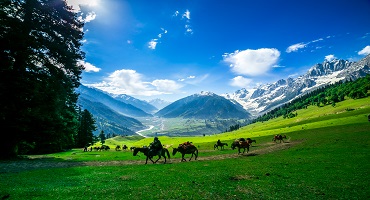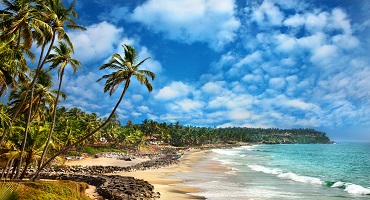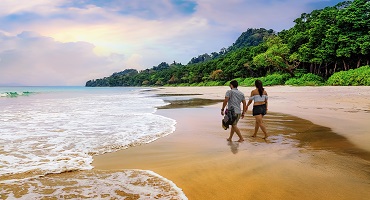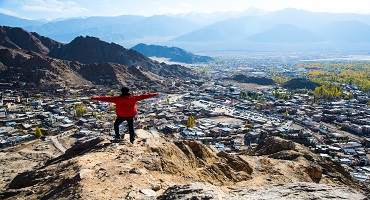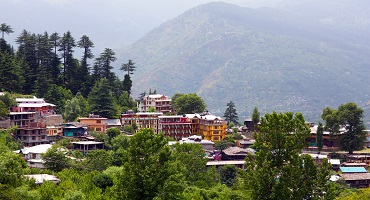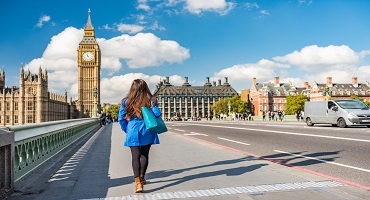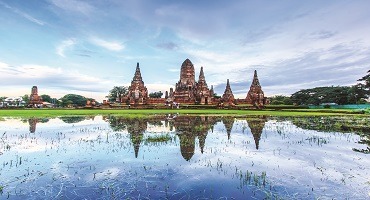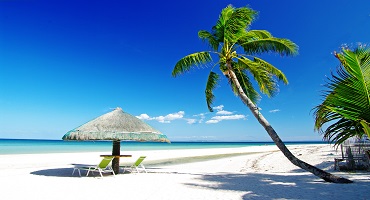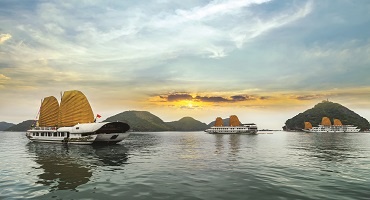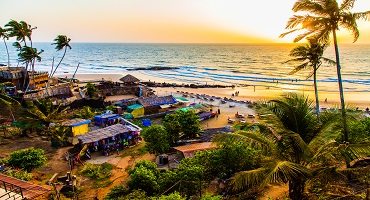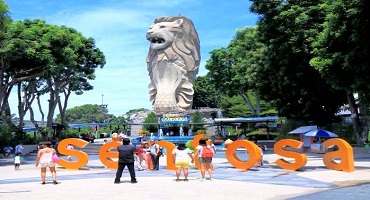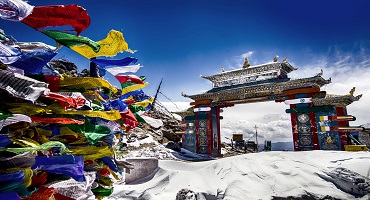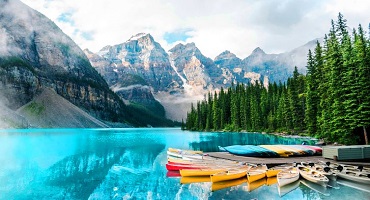If any nation is perfectly able to mimic a master’s landscape painting, it’s the awe-inspiring destination of Croatia! Croatia is a gem of the Adriatic. It offers a harmonious blend of historical richness and natural splendour. From its Sunkist beaches to its medieval towns, Croatia Tourism provides a diverse array of experiences that cater to all types of travellers. Picture silvery jagged fjords protruding out of cerulean waters, sparkling as the sun tints its surface. Think cityscapes teeming with burnt orange roofs, domes and cupolas. Imagine pixie dust waterfalls and emerald forests, as real as you. Close your eyes and taste the sweet wine and Mediterranean culinary delights. Croatia tourism is not a dream, it’s a near reality! So, what are you waiting for? Embark on an adventure of a lifetime with a Croatia travel guide. You will be surprised by how to reach Croatia with the numerous options that truly elevate the experience of the country.
|
Continent
|
Europe
|
|
Official Language
|
Croatian
|
|
Dial Code
|
+385
|
|
Population
|
4,076,246 (as of 2018)
|
|
Currency
|
Kuna
|
|
Time Zone
|
UTC +1 (CET)
|
|
Area
|
56,594 square km
|
Highlights of Croatia
Croatia is known for its many beautiful scenes and experiences. Here are the top highlights of Croatia Tourism:
- It offers over 1000 miles of stunning Adriatic coastline. Croatia Tourism boasts numerous beaches and crystal clear waters, making it a paradise for sun-seekers and water enthusiasts.
- Cities in Croatia.Are adorned with medieval and historic architecture. These well-preserved structures offer a glimpse into the country's rich historic significance.
- Throughout the year, Croatia hosts a variety of festivals. The locals celebrate music, film, and traditions with vigour, providing travellers with a taste of its vibrant culture.
Here are some of the top places to visit Croatia that highlight the country’s beauty:
Zagreb
Zagreb is everything a capital city should be – riveting, vivacious, colourful and charming. So, stroll along Upper Town’s quaint cobblestone streets and crane your neck to glimpse a sea of red roofs, spires and bell towers. Navigate the graffiti lined alleyways and marvel at street art murals that reflect the quintessential character of the place. And when you’re ready, here are some of the top attractions and recommended sites of this vibrant and cultural destination – Mirogoj Cemetery, Katarinin Trg Square, Dolac Market and Croatian Museum of Naïve Art. Aren’t you eager to visit Croatia famous places?
Dubrovnik
Upon first glance, the city of Dubrovnik will quite literally take your breath away. The majestic Adriatic Sea frames it from the left, dazzling brilliantly and warranting all attention. Add to that, sweeping views of exquisite baroque architecture (drenched in twilight) and striking limestone streets, and you’ll be left with what is an exquisite image of this Croatian region! When in Dubrovnik, you must visit the following spectacular sites – City Walls and Forts, Rector’s Palace, Lokrum Island, and Franciscan Monastery and Museum. Tourism in Croatia is delightful!
Trogir
To reach this gorgeous medieval island one must take a bridge that connects it to the mainland. The little town, with its 16th century stone walls and renaissance architecture, shimmers with an aura of mystery. Head to the Placa or promenade, that is dotted with adorable cafes, restaurants and bars, twinkling in the sunset and under the moonlight. You may want to treat yourself to a sea food meal, which includes a fresh catch of fish, lobster, shrimp, mussels and oysters. Wood briquettes are used to grill the fish, after which the fare is drizzled with Dalmatian olive oil. Also try the marinated beef with noodles and rafioli cake!
Plitvice Lakes National Park
The magical Plitvice Lakes National Park is among the best places to visit in Croatia. It’s akin to an enchanting garden or a fairy-tale kingdom – dreamy, ethereal and oh-so wonderful! 16 crystalline terraced lakes are joined by glittering waterfalls that finally extend into a gleaming limestone canyon. Entwining paths and trails manoeuvre across the water, with an electric boat linking the 12 upper and 4 lower lakes respectively. The latter forms the site of Veliki Slap - an extraordinary 78m-high waterfall.
Interesting Facts About Croatia
Apart from its beautiful landscape, historic architecture and vibrant culture, Croatia also safeguard numerous historical facts that have highlighted the country’s significance in civilization. Here are some little-known facts that may interest you for a Croatia travel guide:
- Croatia is home to more than 1000 islands, each showcasing unique and stunning landscapes and offering an array of unforgettable experiences.
- Celebrated scientist Nikola Tesla was born in Smiljan which is situated in a very popular mountain region called Lika and one of the major highlights of Croatia tourism.
- The ‘cravat’ which is a form of necktie is said to have originally originated in Croatia. It is said that in the 17th century, mercenaries wore distinctive scarves that later gained popularity in France and became a staple piece of clothing in the modern age.
- Croatia is the holder of extremely unique Guinness World Records such as the largest box of popcorn and the largest cup of cappuccino.
- The MP3 player was invented in Croatia.
- The Island of Brac shapeshifts according to the winds.
- 1/3rd of Croatia is carpeted by forests.
- The Zinfandel grape was discovered in Croatia.
- Hum is one of the world’s smallest towns, thus making Croatia tourism so fascinating.
Croatia holds many interesting secrets in its bosom. You can learn a lot about the country’s history from Croatia tour guides or explore the towns and talk to the locals for an immersive experience.
Location Of Croatia
The Pearl of the Adriatic Sea, Croatia, sits on the crossroads of Central and South East Europe. It hugs the borders of Slovenia to the northwest, Hungary to the northeast, Serbia to the east, while Bosnia, Herzegovina and Montenegro caress it from the southeast respectively. The nation shares a maritime border with Italy. Its capital, Zagreb, encompasses one of the country's primary subdivisions, along with twenty counties.
Best time to visit Croatia
Croatia is undoubtedly a beautiful country all through the year, in terms of its natural landscapes, festivities, recreational activities and unique offerings. When it comes to the best time to visit and explore Croatia, much depends on the kind of holiday one is seeking as well as their tolerance levels towards various climatic conditions. Spring is all about the flower shows, wine fairs and Easter celebrations, while summer bustles with music festivals and beach parties. Autumn is meant for cosy cabin stays and visits to national parks, while winter calls for relaxation at the hot springs and thermal spas! Each season is highly distinct and equally enjoyable, however if we had to make a recommendation we’d go with the season of summer as the best time to visit!
If you seek an immersive experience, the best time to visit Croatia is from May to October. The weather is usually warmer and all the tourist facilities are operational. You may encounter several interesting festivals and celebrations as well. July and August are peak months and the best time to visit Croatia with a number of tourist attractions inviting travellers from around the globe. May, June, September, and October are the best time to visit Croatia if you want milder weather conditions and fewer crowds, thus allowing you to immerse in more activities and tourist experiences.
How to Reach Croatia
By Air – Croatia is blessed with efficient airports such as Split Airport, Dubrovnik Airport and Pula Airport, however, Zagreb Airport is the largest and busiest international aerodrome offering connections to all major Indian cities such as Delhi, Mumbai, Bangalore, Chennai, Hyderabad, Kolkata and Ahmedabad. Individuals can choose from the following carriers - Lufthansa, Air India, Jet Airways, Air France, Etihad, British Airways, Turkish Airlines and Qatar Airways.
By Rail – Croatia is endowed with an intricate railway network that has direct transportation lines to Zagreb, Pula, Rijeka and Split. Individuals who wish to travel by train can do so from the following destinations in Europe - Austria, Germany, Czech Republic, Switzerland, Hungary, Italy, Slovenia, Bosnia and Herzegovina, Greece and Serbia.
By Road – Those who wish to travel by road can do so from almost all European countries via comfortable bus coaches. Zagreb, Istria, Rijeka, Zadar, Split and Dubrovnik have accessible bus junctions. Furthermore, individuals can embark on an exciting and scenic road trip from Italy, Germany, Austria, Hungary, the Czech and Slovak Republics.
By Sea – If you’re traveling from Italy, you can avail of the ferry service (or catamarans) from the ports of Venice, Trieste, Cesenatico, Pesaro, Ancona or Bari.
History Of Croatia
The earliest vestiges of human life can be traced back to the Neanderthals, dating back to the Palaeolithic period. By 10,000 BC, the Illyrians came into power and established control over Slovenia, Croatia, Serbia, Kosovo, Montenegro and Albania. By 168 BC, the Romans had taken the reigns, setting up what was perhaps one of the most powerful empires. They were followed by the Slavics, Avars, Serbs, Byzantines, Venetians, Hungarians, Ottoman Turks, Austrians and many other mighty clans. After the collapse of the Austro-Hungarian Empire, The Yugoslav Committee became the National Council of the Slovenes, Croats and Serbs respectively. This was followed by further political development, changes and conflict, including a war and the UN getting involved. Fast forward to 25th June 1991 when Croatia finally gained independence.


